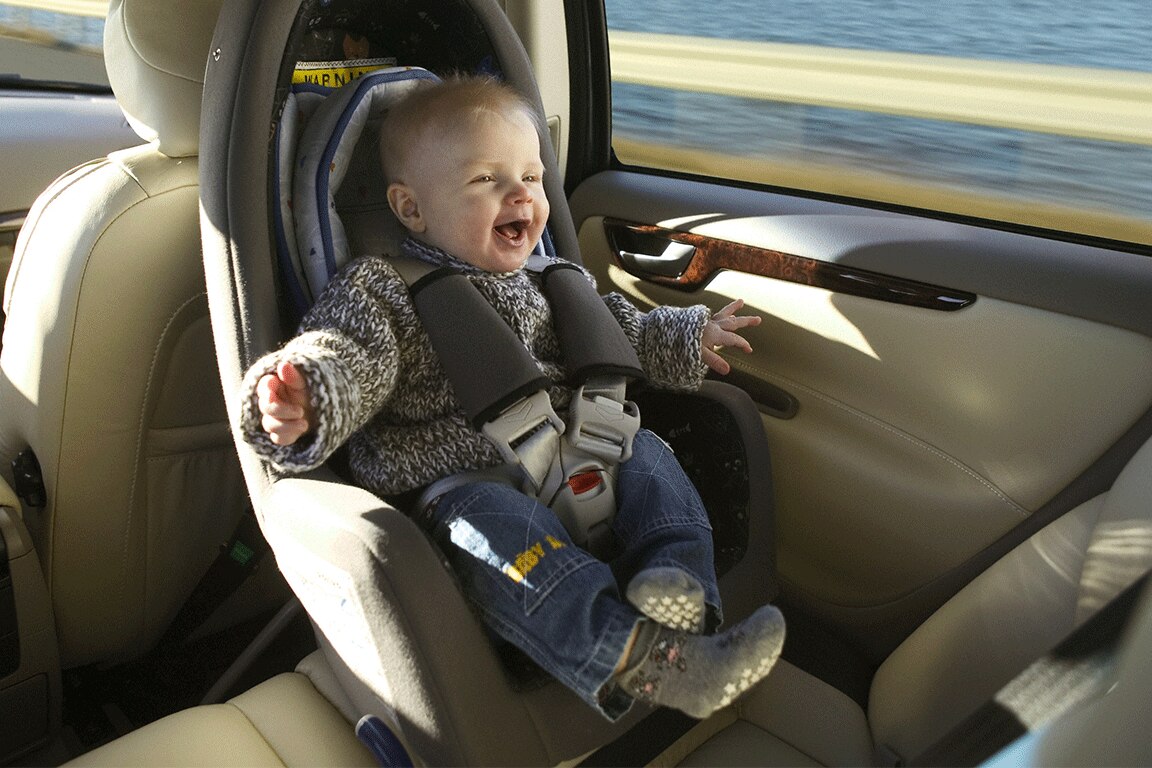Parents have an almost primal urge to protect their children in all situations in life; ensuring they are safe and kept out of harm's way is an instinct that almost all responsible mums and dads would recognise. From the moment they are born, through to nursery and school drop offs and even lifts to parties (and possibly pick ups!) when older, parents have a lifetime of car journeys ahead of them. With most households today owning at least one car and making regular commutes with children on board, this watchful tendency is even more pertinent.
According to the RAC, those with children drive around 1,330 miles more each year than those without. Given this dependence upon cars, having knowledge about the best way to keep your child safe, and keep yourself on the right side of the law, is crucial.
The Law
Drivers are legally required to provide the correct car seat for any child travelling in the front or rear of their vehicle until that child is either 135cm in height or 12 years old (whichever comes first). Thereafter they must use an adult seatbelt. The vehicle itself could be a car or van and the child may be a friend of your son or daughter you are simply taking home after a swimming lesson. Whatever the situation it is your car and therefore your responsibility.
Failure to comply may result in fines. A fixed penalty fine would cost you £100, however if taken to court you could find yourself being fined £500. Additionally you could also face civil proceedings if you neglected to safely carry someone else's child.
Of course the ultimate penalty is injury or loss of life to someone within your care.
Car Seats – Make the Right Choice
From the moment babies leave hospital, they are subject to regulations surrounding car seats. As they grow and change so do the legal obligations. Read our handy guide which outlines what you need to do and when you need to do it, and keep your little passengers safe while on the road.
Babies (up to 13 kg, group 0+ seats – rear-facing)
New babies travel in rear-facing baby seats that are classified as either group 0 or 0+. It is generally recognised however that babies will be safer seated in the rear of a car and many designs of car seats for this stage are cleverly constructed to allow for ease of manoeuvre.
Watch out for: If your baby is placed in the front passenger seat the airbag must be deactivated as this could seriously injure your baby in a crash if deployed.
Toddlers (9-18 kg, group 1 seats – forward-facing)
When your baby reaches 9 kg there is no need to rush him or her into a forward-facing seat. Don't be alarmed if your little one's feet are pressing against the back of the car seat when placed in their rear-facing seat. It is actually better for them to stay in it until they reach the weight limit for their baby seat or you can see the top of their head at the top of the seat.
Watch out for: Most group 1 seats are forward-facing but rear-facing can be found. Not all cars accommodate them however so it is important to try them in your car before you actually make a purchase.
Children up to 12 (15 kg upwards, group 2 and 3 seats)
As your child grows they will inevitably become too big for their group 1 car seat. At this stage it is safe to move them to the next type of seat, usually a booster seat. It is better however to keep your child in their group 1 seat for as long as it fits as they offer more protection than booster seats so don't rush it too much! As a general rule you should move your child to a booster seat when their eye-line is above the child seat back. If they are too tall for the seat it could result in neck injuries in the event of an accident.
Over age 12 or taller than 135cm
When your child is 12 or over, or taller than 135cm (whichever comes first) they can legally move to using an adult seat belt and you can say goodbye to your booster seat (which by this stage may be a little battle weary!)
Watch out for: Even if your child is over 135cm it may be that the adult seat belt lies on their tummy and neck rather than on the strongest parts of their bodies - the hips, chest and shoulder. With this in mind they are likely to be better protected if you keep them in a booster seat engineered for their weight as long as you can.
Follow these simple rules and ensure your child is protected at all times while in your car. Keeping them safe gives you peace of mind and that can help you sleep like a baby!


